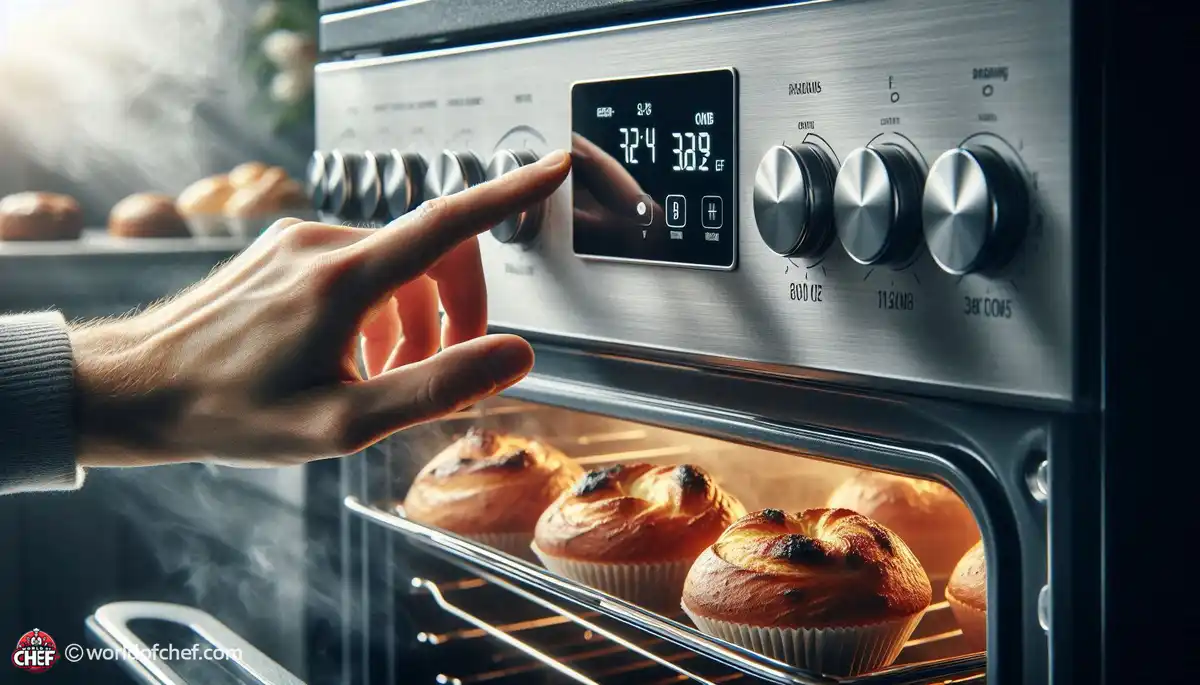
Simmering with Spices: Infusing Flavor into Your Dishes
Emery Donley - Oct 8, 2024 - 8 min read


Baking is an art of precision. Each ingredient counts, but probably none more so than temperature. To master the art of baking, you must understand the science behind it. Oven temperature is not just a number; it is the difference between a perfectly risen soufflé and a sunken disappointment. Heat alters the chemical makeup of ingredients, resulting in those wanted textures and flavors. Consider proteins set, sugars caramelize, and fats melt-all at specific temperatures. Thus, even the slightest change can dramatically affect the final result.
Imagine this: you spend all of the time measuring out every ingredient, sticking to that recipe to a T, and your cake is dry or undercooked. What happened? Most of the time, it is the oven temperature that is a little off. The smallest degree of change in temperature can wreak havoc in your baked goods by causing them to bake unevenly, leading to collapsed structures or unpleasant textures. Bake a few degrees too hot, and your flimsy pastries may end up being charcoal; bake them a few degrees too cold, and they'll remain raw in the middle. This variation upsets the perfectly orchestrated reactions that make baking possible, thus resulting in dismal results.
Perfect bakers use a wide range of tools and techniques to achieve oven temperature accuracy. First, there's the oven thermometer. The thermostats built into the oven are notoriously inaccurate, so the oven thermometer provides you with real-time readings that you can adjust. Another very important thing is calibration, since ovens drift over time from their programmed temperature; you will have to calibrate the oven as regularly as possible to remain at an even keel. Lastly, by using your oven racks, you prevent hot spots and thus better obtain evenly cooked food with the least chances of burning it.
Practically, the skill of acquiring a sense of how an oven temperature works is even more than being tool-based. Experienced bakers, with practice and observation, get an instinct. Pay attention to visual and olfactory cues; a golden-brown color and an aromatic smell are sure indicators of a perfectly baked treat. Try out different things; familiarize yourself with your oven's quirks and idiosyncrasies, which will help you adjust techniques accordingly. With time and patience, you will learn to navigate the unpredictable world of baking with finesse.
Preheat your oven. That way, the oven will have reached the required temperature when you introduce your fragile creations. If you omit this step, then your goods will be subjected to fluctuating temperatures in the preheating stage and may end up baked unevenly. So try preheating your oven at least 15-30 minutes before baking. But at least you will know that your oven has indeed reached the set temperature.
How can you be absolutely sure whether your oven actually has come to the value shown on the dial? For an easy experiment, simply insert an oven thermometer in the center of the center rack and set your oven to a fixed temperature point, like 350°F (175°C). Let the oven heat up fully, then take a look at the thermometer reading. If it's the same as the temperature you have set, you're all set. Your oven is properly calibrated. If it isn't, then there's a need to adjust or recalibrate your oven.
Once your oven is heated up and your baked goods are inside, do not constantly peek on them. Every time you let the oven door open, the precious heat leaves so that the baking is upset. Instead, depend on your senses and turn off the oven light whenever there is a need for the same. In case you realize that your pans have a possibility of uneven baking, then rotating them in the middle can help to evenly warm them. Count your hours, but quality beats time. Baking is almost an exercise in patience besides precision.
You'll hit a few bumps on the road, no matter how hard you try. When your baked goods are always coming out under- or overcooked, it is time to troubleshoot. Begin by checking the accuracy of your oven's temperature using an oven thermometer. If the problem persists, you should refer to your oven's manual for instructions on recalibration or professional service. You may also consider altitude and humidity, both of which can affect the baking time and temperature of your baked goods. Do not be discouraged when mishaps occur; every stumble is a chance to master your craft and develop even greater insight into the bakes.
Conclusion: Advance Your Baking Precision - The Art and Science Behind Baking
Baking is all about precision. Be it measuring out ingredients, oven temperature, or a number of things, that's what defines the product in the end. Accurate oven temperature will, therefore, make you have control over countless culinary wonders with consistency and confidence. Whether you're a newcomer to baking or an expert, precision will take your creations to new heights. So, preheat, check, and calibrate-it's time to bake.

Emery Donley - Oct 8, 2024 - 8 min read

Russell Comeaux - Oct 8, 2024 - 8 min read

Walter Backus - Oct 7, 2024 - 8 min read

Samantha Thames - Oct 7, 2024 - 6 min read